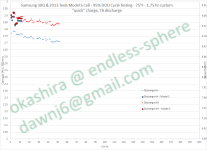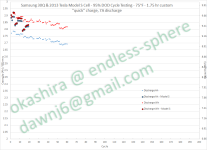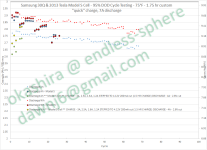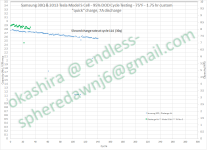What about these batteries ? : http://www.keeppower.com.cn/products_detail.php?id=520
KP IMR 26650 battery 5200mAh max 30A discharge 3.7v lithium battery UH2652
* Quality High Drain Li-ion Rechargeable Battery
* Brand: KeepPower
* Size: 26650
* Part No.: UH2652
* Nominal Voltage: 3.7V
* Nominal Capacity: 5200mAh
Details
Product Description
1. High Drain IMR26650 Li-ion Rechargeable Battery UH2652
2. Typical Capacity: 5200mAh
3. Normal Voltage: 3.7V
4. Charge Method: constant voltage with limited current
5. Standard Charge Current: 2000mA
6. Fast Charge Current: 4000mA
7. Max. Plus Discharge Current: 30.0A
8. Max. Constant Discharge Current: 15.0A
9. 4.2 volts full charged voltage and 2.5 volts discharge cut off voltage
10. High charge and discharge currents reduce cycle life.
>
>
magudaman said:
I had been looking over my battery choices a couple months ago and recently wrapped up my electrified GoPed project and want get a new battery for it. So I started looking at batteries again.
Ok so the battery I’m not seeing much information on here is the Samsung INR18650-30Q. This is a 3000mah battery that can do 20a intermittent and 15a continuous, all for $3.18 a cell! Just like the 20R they only quote 250 cycles at that load but I hope I will get better using a lower rates. I also attached the data sheet.
So should I pull the trigger on 200 cells, I just wanted to make sure there wasn't a new giant battery scam going on that my searches were not catching? My current project is only for 56 cells but will be assembling a new bike after selling my electric motoped that should fund a project for the remaining 140 or so cells.








